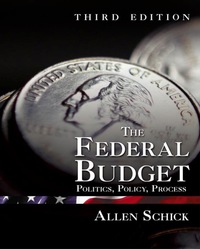URGENT PLEASE ANSWER THE FOLLOWING PARTS A,B,C,D,E, I NEED HELP


II. Problems - You have to show your work. No credit without an explanation. 1. You would like to estimate the percentage of residents who read a particular journal. Based on a sample of 195 observations in a randomly chosen neighborhood, your estimate of the log odds ratio of the proportion that do not read relative to those who read the journal is 0.237. What is the estimate of the probability to read the journal? (10 points) 2. You would like to investigate if democratic voting states in the US are more affected by COVID-19 than republican voting states. You have data for the 50 states and the District of Colombia of the following variables: state - name of the state: idstate - state abbreviation; 1 popn - estimate of population in 2019; density - estimate of population density (in inhabitants per km): democrat - number of votes in 2016 Presidential Election for the democratic nominee Hilary Clinton: republican - number of votes in 2016 Presidential Election for the republican nominee Donald Trump: positive - cumulative number of positive tests; negative - cumulative number of negative tests; dead - cumulative number of deaths of COVID-19. winner - winner of the state, either democrat or republican, One can consider a binomial logit model for the proportion of the number of deaths over the total mumber of positive cases in a state. The estimated model has this proportion as a dependent variable and density and winner as independent variables. (a) Explain why it is better to consider the number of deaths relative to the number of positive cases rather than relative to the state's population. (6 points) (b) Report and interpret the estimated parameter of the density variable, based on the SAS output below. (6 points) (c) Test if the winner variable influences the mortality rate. Give an estimate of the ratio of the odds for democrats vs. republicans as well as a confidence interval for it based on the ML. (6 points) (d) Instead of using the winner variable, one can use the ratio of republican to democrat. Re- port the estimated parameter of this new variable and its interpretation. Test it for statistical significance. Do your conclusions change? (6 points) One can consider a negative binomial model for the mortality rate, with density and winner as independent variables, while taking into account the number of positive cases per state (as an offset), (c) Report and interpret the parameter associated with winner for the negative binomial regression. Test it for statistical significance. What do you conclude? (6 points) SAS OUTPUT for 02 Parameter Intercept ARTROMmmhed Eumata Siden Emr Chi-Square Pr>Chiesa Art) 1 -3.6229 0.0200 32960.1513 20001 0.027 0.00024 0.000039 15.9858 0001 1.000 UM 0.2005 0.0250 4.8612 4.0001 1222 RED 0 0 winner Rinner Odda kata Estimates and refle. Likelihood Confidence Intonal ETTE Unidastimate 95% confidence Limlis density 1.0000 1.000 1.000 winner den vs rep 1.000000 1.222 1.164 Odds katto lastimals and Profile-likelihood Confidence Interal: Emel Unii Estimate Coundenec Limits density 10000 1.000 1.000 1.000 Ratio rep/dem, 1.0000 0.914 0.890 0.957 Analysis orMaxlamlikeiled Parameter Heimili Likelihood Ratid Standard 2517 lider Wald Parameter Destinate Hero.mit. Square Preise Intercept 13.7674 0.0723.911330159 2507203 20001 Eleo 0.0000 0.0001 0.0002 0.002 0.11 0.7360) winner dem 0.1073 0199 DIESE 0.947 0.83 0.3639 winner ren D DMXXO DJXYDO 0.000000000 Despersien 0.1340 0.0341 DONE 0239








